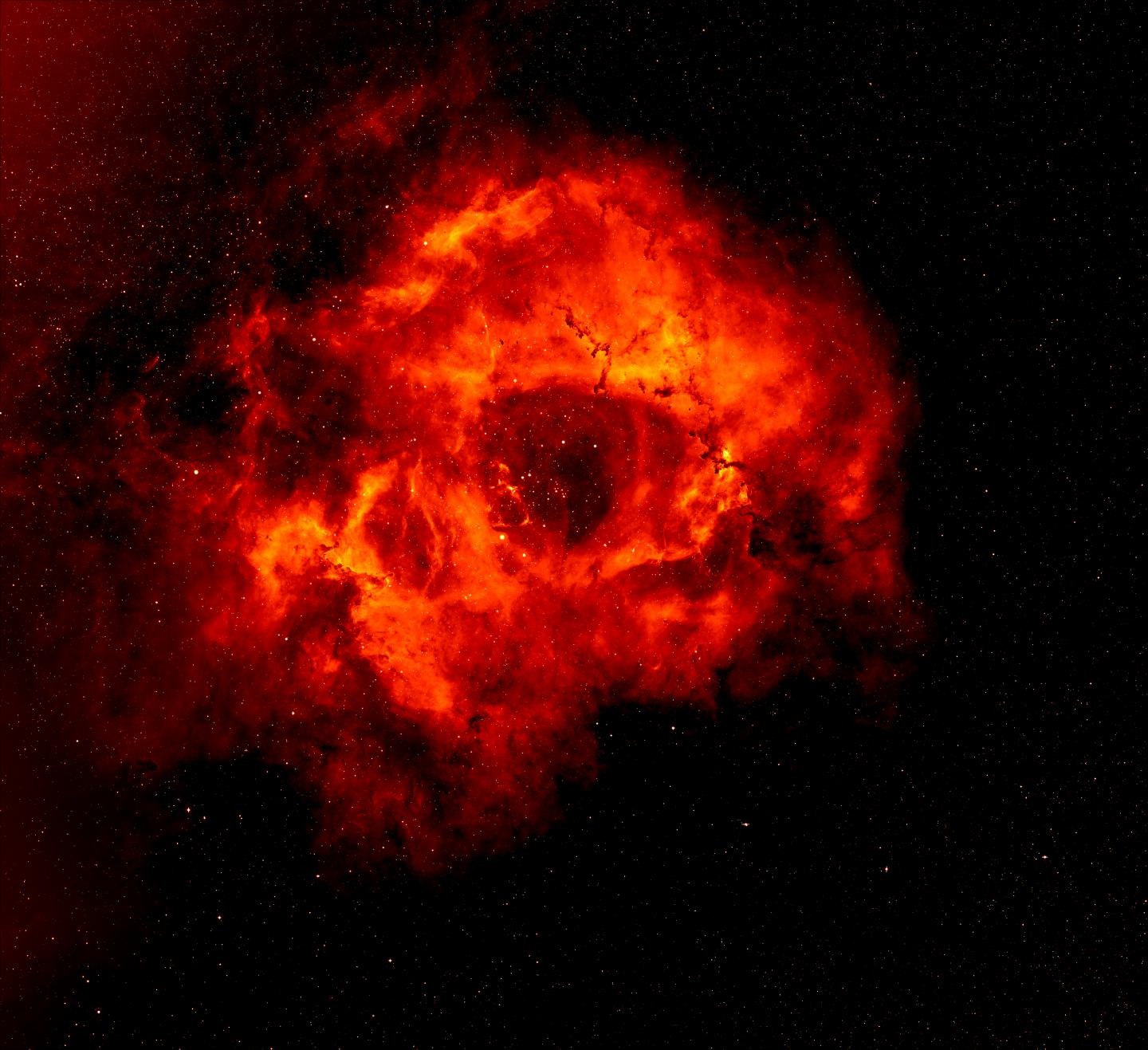Getting to the Heart of the Rosette Nebula: How It Got Its Rose Shape

A new simulation explains the hole at the center of the Rosette Nebula that gives the cloud of interstellar gas and dust its distinctive rose-like shape.
The Rosette Nebula sits in the Milky Way about 5,000 light-years from Earth. Massive stars at its core have blasted a hole in the cloud of material with radiation and flows of charged gas particles, called stellar wind.
But the size of the hole didn't match up with the age of the central stars; simulations suggested that an even larger hole should have bloomed in the material.
"The massive stars that make up the Rosette Nebula's central cluster are a few millions of years old and halfway through their lifecycle," Christopher Wareing, a researcher at the University of Leeds in England and the lead author of the new work, said in a statement. "For the length of time their stellar winds would have been flowing, you would expect a central cavity up to ten times bigger."
To investigate the discrepancy, Wareing's group simulated the stars' actions at the heart of molecular clouds with different shapes, including "a clumpy sphere, a thick filamentary disc and a thin disc, all created from the same low-density initial atomic cloud," Wareing said.
"It was the thin disc that reproduced the physical appearance — cavity size, shape and magnetic-field alignment — of the nebula, at an age compatible with the central stars and their wind strengths," he said.
The researchers used data from the European Space Agency's Gaia spacecraft, which is currently building a 3D model of the Milky Way, to incorporate the exact locations of several bright stars within the nebula.
Breaking space news, the latest updates on rocket launches, skywatching events and more!
"To have a model that so accurately reproduces the physical appearance in line with the observational data, without setting out to do this, is rather extraordinary," Wareing said. "Next we'll look at the many other similar objects in our galaxy and see if we can figure out their shape as well."
The new work was detailed Feb. 13 in the journal Monthly Notices of the Royal Astronomical Society.
Email Sarah Lewin at slewin@space.com or follow her @SarahExplains. Follow us @Spacedotcom, Facebook and Google+. Original article on Space.com.

Sarah Lewin started writing for Space.com in June of 2015 as a Staff Writer and became Associate Editor in 2019 . Her work has been featured by Scientific American, IEEE Spectrum, Quanta Magazine, Wired, The Scientist, Science Friday and WGBH's Inside NOVA. Sarah has an MA from NYU's Science, Health and Environmental Reporting Program and an AB in mathematics from Brown University. When not writing, reading or thinking about space, Sarah enjoys musical theatre and mathematical papercraft. She is currently Assistant News Editor at Scientific American. You can follow her on Twitter @SarahExplains.

